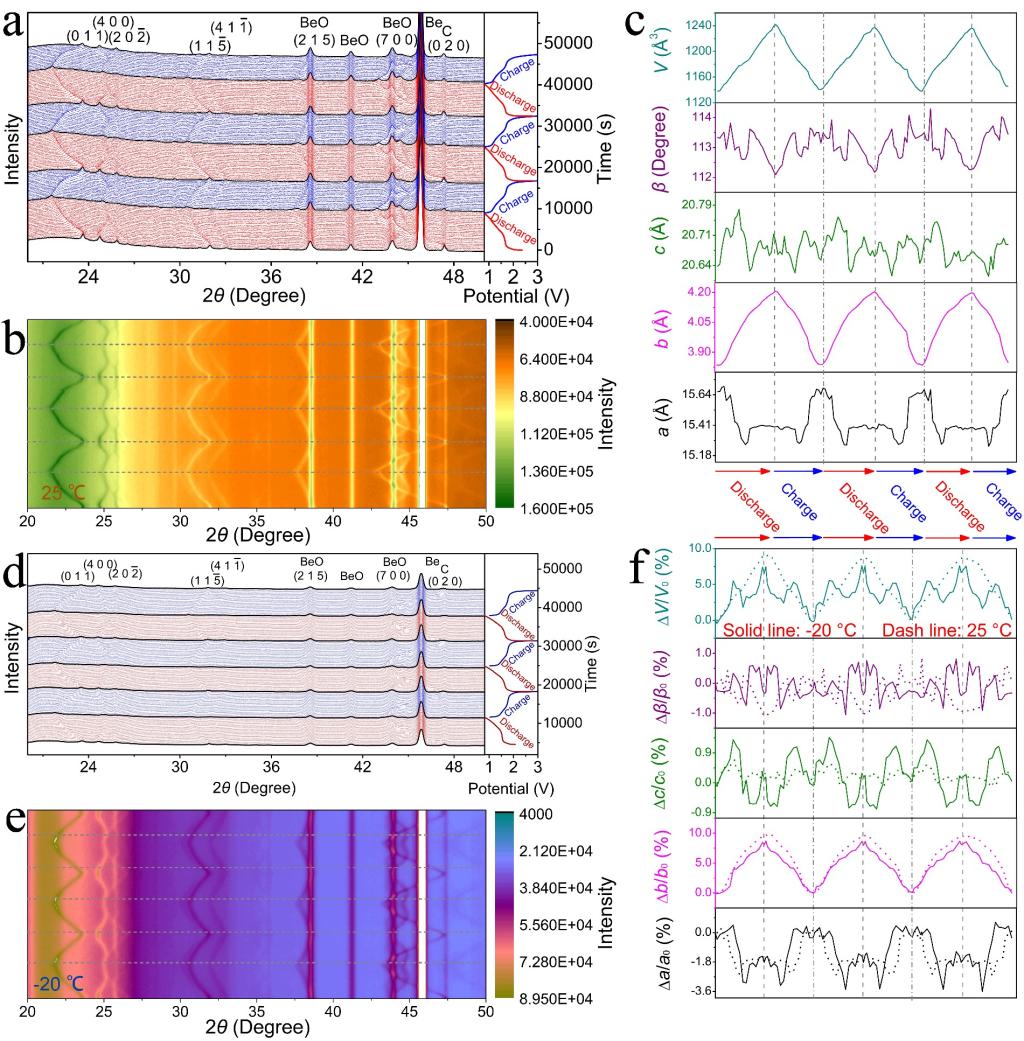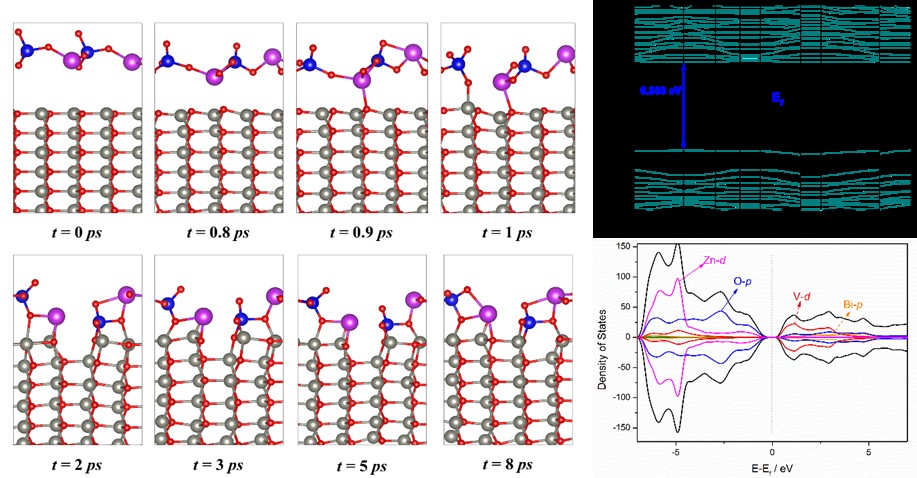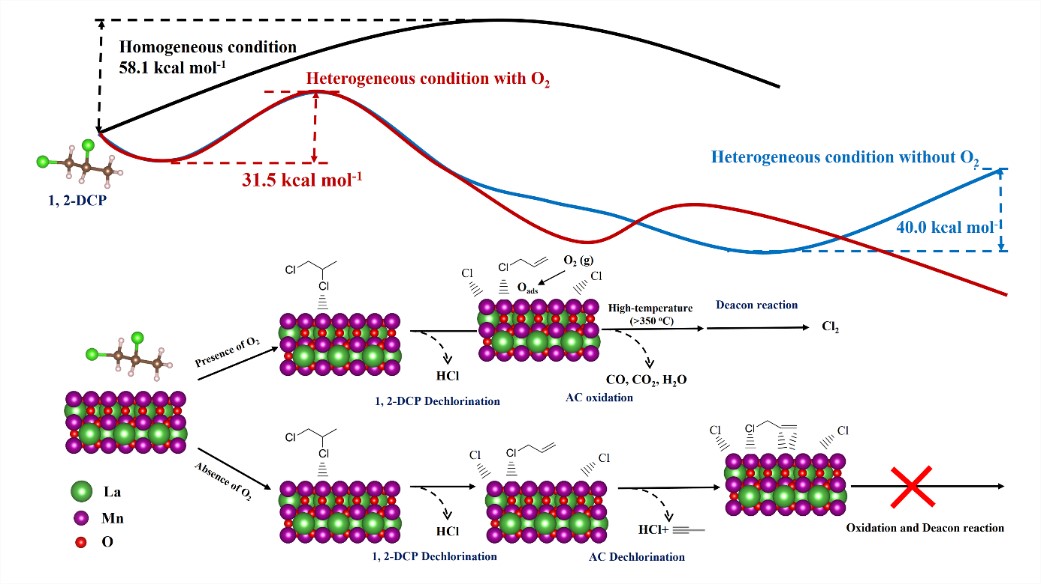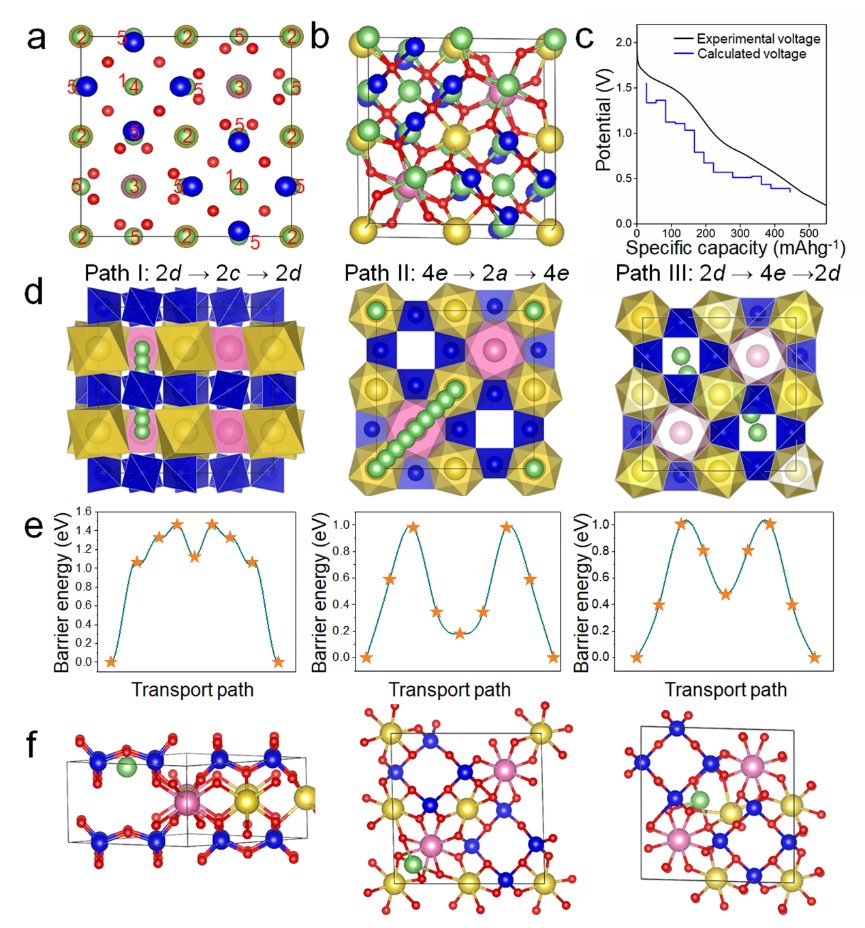In-situ Characterization
In-situ characterization techniques are very important for the research of energy and environmental materials, especially for the exploration of their working mechanisms. Compared with ex-situ tests, in-situ tests can achieve real and reliable data, dynamic-variation information, and unbalanced and transient-state information. In addition, the pollution, hysteresis, and irreversibility problems during the sample preparation and transfer can be avoided. In recent years, more and more in-situ test methods have been explored, and their applications become wider and wider.
In 2018, the In-situ Characterization & Computational Calculation Center was established, aiming to strengthen the understanding of materials chemistry and mechanistic aspects of charge transfer and storage. The Center now owns in-situ XRD, in-situ TEM, in-situ Raman and in-situ IR, and is seeking in-situ SEM and in-situ XPS facilities. Some results based on these in-situ tests have been revealed in the papers published in Advanced Energy Materials, Advanced Functional Materials, Advanced Science, and Energy Storage Materials, etc.
Computational calculations and simulation constitute of another key function at the Center. By carrying out atomic scale simulation calculation, the structures, properties and dynamic behaviors of the system are available. Based on certain physical and chemical principles, the computer simulation can be used to predict new materials, discover new mechanisms, and provide theoretical explanation and guidance for the experiment, so as to build a bridge between theoretical science and experimental science. At present, the computing and simulation center has three Sugon I620-G20 rack servers (18-core CPU × 2, 600G hard disk drive × 3, 128G memory) and three DIY servers (24-core CPU × 2, 1T hard disk drive, 384G memory). In addition, we have purchased VASP software for first-principles calculations.
The specific research activities include:
1) Simulation of the structure and properties of heterogeneous catalytic materials;
2) Calculation of the structure and properties of energy storage materials;
3) Electronic structure and guidance design of the material interface; and
Pollutant conversion mechanism

Figure 1. The in-situ electrochemical characterization facilities available at the Center

Figure 2. Crystal-structural evolution of PR-TNO (Adv. Sci. 9 (2022) 2105119). a) Pristine in-situ XRD patterns of PR-TNO/Li in-situ cell with corresponding discharge-charge curves within 3.0–0.8 V at 0.3C and 25 ℃ (initial three cycles). b) Two-dimensional in-situ XRD patterns of PR-TNO/Li in-situ cell at 25 ℃. c) Lattice-parameter variations of PR-TNO at 25 ℃ (initial three cycles). Ex-situ HRTEM images of PR-TNO at d) pristine, e) lithiation to 0.8 V, and f) delithiation to 3.0 V states. g) Two-dimensional in-situ XRD patterns of PR-TNO/Li in-situ cell at -20 ℃. h) Comparisons of lattice-parameter variations (in percentage) of PR-TNO at -20 ℃ (solid line) and 25 ℃ (dash line).

Figure 3. In-situ TEM characterizations of VPO5 (Energy Storage Mater. 46 (2022) 366–373). (a) In-situ TEM half-cell setup used. SAED patterns at (b) pristine and (c) lithiated states. The crystallographic-plane indices in both white and yellow belong to VPO5. Time-lapse TEM images of Li+ insertion process at (d) 22 (e) 30 and (f) 90 s. The very obvious movement of strain fringes can be clearly seen in the blue and dashed rectangles.
With the development of computer, material computing and simulation are the crossover applications involving materials science, theoretical chemistry, physics and other fields. Material plays an essential role and is one of the pillar industries in the 21st century. The development of material computing simulation has greatly improved the understanding of original material. By carrying out atomic scale simulation calculation, the structures, properties and dynamic behaviors of the system are available. Based on certain physical and chemical principles, the computer simulation can be used to predict new materials, discover new mechanisms, and provide theoretical explanation and guidance for the experiment, so as to build a bridge between theoretical science and experimental science.
Specific research contents include:
1) Simulation of the structure and properties of heterogeneous catalytic materials
2) Calculation of the structure and properties of energy storage materials
3) Electronic structure and guidance design of the material interface
4) Pollutant conversion mechanism
Some study examples are shown as follows:

Figure 4. AIMD simulations of the interaction between BiVO4 and ZnO. Band structure and partial density of states for BiVO4/ZnO heterojunction (Appl. Catal. B Environ. 285 (2021) 119833).

Figure 5. DFT calculated oxidation mechanism of 1,2-dichloropropane oxidation over LaMnO3 perovskite (J. Hazard. Mater. 402 (2021) 123473).

Figure 6. DFT calculated Li+-insertion sites and Li+-diffusion paths for Na2Ca(VO3)4 (Adv. Funct. Mater. 32 (2022) 105026).

